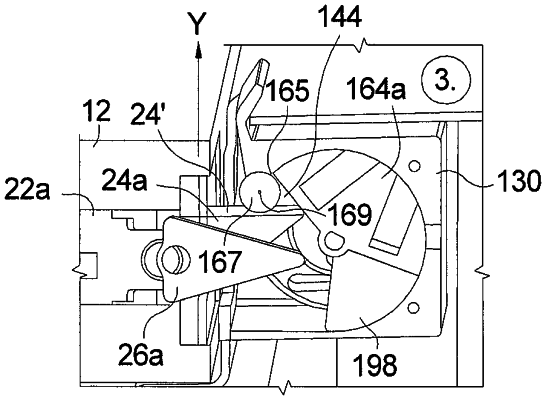| CPC E05B 47/0047 (2013.01) [E05B 47/0012 (2013.01); E05B 63/0056 (2013.01); E05B 63/04 (2013.01); E05B 2047/0022 (2013.01); E05B 2047/0024 (2013.01); E05B 2047/0067 (2013.01); E05Y 2900/132 (2013.01)] | 46 Claims |

|
1. A door strike assembly for use in conjunction with a lockset of a door, wherein the lockset includes a door latch selectively moveable from a latched condition when the door is in a closed orientation and an unlatched condition when the door is in an openable orientation, wherein the lockset includes a deadlatch configured to prevent unauthorized movement of the door latch when the door is in the closed orientation, the door strike assembly comprising:
a) a strike housing; and
b) a latch release assembly received within the strike housing, the latch release assembly comprising:
i) a latch ejector rotatably connected to the strike housing about a first axis, wherein the latch ejector includes a leading edge and a trailing edge, wherein the leading edge is disposed at a first angle relative to the trailing edge, wherein the latch ejector includes a cam portion extending from and non-movably mounted to the trailing edge, wherein the cam portion includes an outer cam surface and a cam edge, wherein the cam edge is disposed at a second angle relative to the leading edge, wherein the first angle is greater than the second angle, wherein the outer cam surface is configured to engage the deadlatch when the door is in the closed orientation; and
ii) a motor operatively coupled to the latch ejector, wherein actuation of the motor rotates the latch ejector in a first rotational direction about the first axis whereby the outer cam surface is configured to disengage from the deadlatch as the latch ejector is rotating in the first rotational direction about the first axis, and wherein further rotation of the latch ejector in the first rotational direction causes the leading edge of the latch ejector to engage the door latch whereby the door latch is moved from the latched condition to the unlatched condition such that the door is placed in the openable orientation.
|